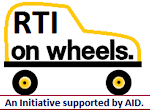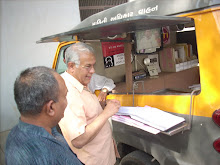Moneylife: National: Friday,
04 September 2020.
The
malaise of big loan write-offs and poor recovery extends across public sector
banks, as is evident from the Rs26,072 crore bad loans written off by Union
Bank of India (UBI) in the past eight years. The Bank has, however, refused to
share information on money recovered from defaulters.
As in
the case of the State Bank of India (SBI), Bank of Baroda (BoB), and Bank of
Maharashtra (BoM) that have been reported by Moneylife, this is yet another
example massive ‘technical’ write-offs with minuscule recoveries, leading to
frequent recapitalisation of banks with taxpayer’s money. Such write-offs also
debunk the aggressive posturing by the government and policy-makers about their
so-called recovery efforts.
Information
provided by the UBI under the Right to Information (RTI) Act to social activist
Vivek Velankar shows that the lender wrote off bad debt worth Rs26,072.81 crore
between FY11-12 and FY19-20 (this information pertains only to loans of over
Rs100 crore).
However,
the Bank has refused to share information about loan recovery under the RTI
Act. UBI told Mr Velankar, "The information sought, the segregation and
collation of which would cause disproportionate diversion of resources, hence,
in terms of section 7(9) of RTI Act, we express our inability to provide the
said information."
The Bank
ought to have published on its website the names of big defaulters, whose loans
of Rs100 crore and above have been written off. Yet, the Bank says, "The
information sought is held in commercial confidence with the Bank. Since no
larger public interest is involved, we are exempted under section (8)(1)(d) of
RTI Act to provide information to you." Much of this information has also
been published by the All India Bank Depositors Association (AIBEA), and, yet,
Union Bank of India’s sympathies seem to lie with the defaulters.
The
amounts written off by the UBI eat into its profits and cause a range of charges
to be slapped on ordinary depositors. Yet, the Bank asserts that there is no
larger public interest involved, even though it relates directly to money in
the form of savings accounts and deposits made by common people.
Mr
Velankar, president of the Pune-based Sajag Nagrik Manch, who has been
assiduously exposing the details of the written-off loans, says, "If this
information is in commercial confidence, then how did SBI share the names of
its top 225 defaulters, whose loans were written off? Or does the definition of
commercial confidence change with every bank? Moreover, why do the names of
these big defaulters need to be kept a secret?"
"When
a common borrower defaults, the same bank publishes his name and all the
details through advertisements in newspapers. Why do they want to keep the
names of bigger defaulters hidden? Why doesn’t the 'confidentiality' clause
apply while publicising the names of the common borrowers?" he asks.
In its
reply under the RTI Act, the central public information officer (CPIO) of UBI
also refused to share information on loans written off in a year-wise manner.
The CPIO instead directed Mr Velankar to check the annual report of the Bank
for the past eight years to know bad debts written off in that particular year.
Technically
speaking, when debts are written off, they are removed as assets from the
balance sheet because the bank does not expect to recover payment.
This
practice is frowned upon by experts but is routinely done by banks as part of
their tax management clean-up process. The beneficiaries are invariably some of
our biggest industrialist defaulters.
In
contrast, when a bad debt is written down, some of the bad debt value remains
as an asset because the bank expects to recover it. However, as SBI, BoB and
now BoM have shown, most of the times, there is no recovery or negligible
recovery for the amounts written off.
As
reported by Moneylife, Bank of Maharashtra has written off bad loans of over
Rs7,402 crore in the past years, while recovering a paltry 4% in over eight
years through recovery efforts. The lender wrote off bad debts worth Rs7,402
crore during four out of the past eight years, while recovering just Rs253.55
crore.
From
2012 to 2020, BoB had technically written off 97 accounts with bad debts of
Rs100 crore and more. These add up to Rs21,476.89 crore over eight years, while
recovery in that same period is just 4.91% or Rs1,056.53 crore.
Similarly,
from FY12-13 to FY19-20, SBI, the country's largest lender, wrote off bad loans
worth Rs1.23 lakh crore of bad debt but recovered a paltry Rs8,969 crore.
A few
months ago, there were a lot of heated arguments about written off loans of big
defaulters. In April, the Reserve Bank of India (RBI) had said that Indian
banks have technically written off a staggering amount of Rs68,607 crore due
from 50 top wilful defaulters, including absconding diamantaire Mehul Choksi.
RBI had revealed this information in reply to an RTI query filed by Saket
Gokhale.
However,
at that time, everyone from the government, including the Union finance
ministry and supporters of the government had
insisted that technical write-off does not mean waiving off loans and
efforts are on for the recovery of these written off loans.
Meanwhile,
State-run lenders continue to write off huge amounts of bad loans without any
real effort on recovery. All this happens, as Mr Velaknar has rightly pointed
out, due to lack of checks & balances in banks by the regulator and the
concerned authorities. In the end, it is the common bank customer who pays for
all this financial manipulation and bad book-keeping, either through increased
charges for every service or by receiving lower interest rates from the lenders
on deposits or savings account.















































































